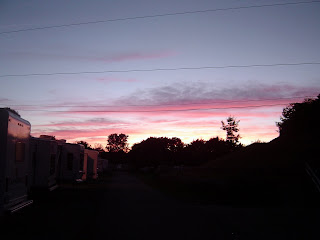
Today was our last day on the road as we have to hand back the motor home tomorrow between 8am & 10am. We had a relatively short trip down the motorway to the campground just up the road from the motor home depot. The rest of the day was spent on the unenviable job of cleaning the van and trying to fit everything we had acquired into the suitcase space available! We did get the opportunity of a good long walk and took a few minutes out to explore the local lakeside beach where many of the locals were enjoying a swim. Water Temp 23 degrees C Air temp 25 degrees C
.JPG)





.JPG)

.JPG)
.JPG)

.JPG)






.JPG)











+email.JPG)





+7th+Feb+04.JPG)